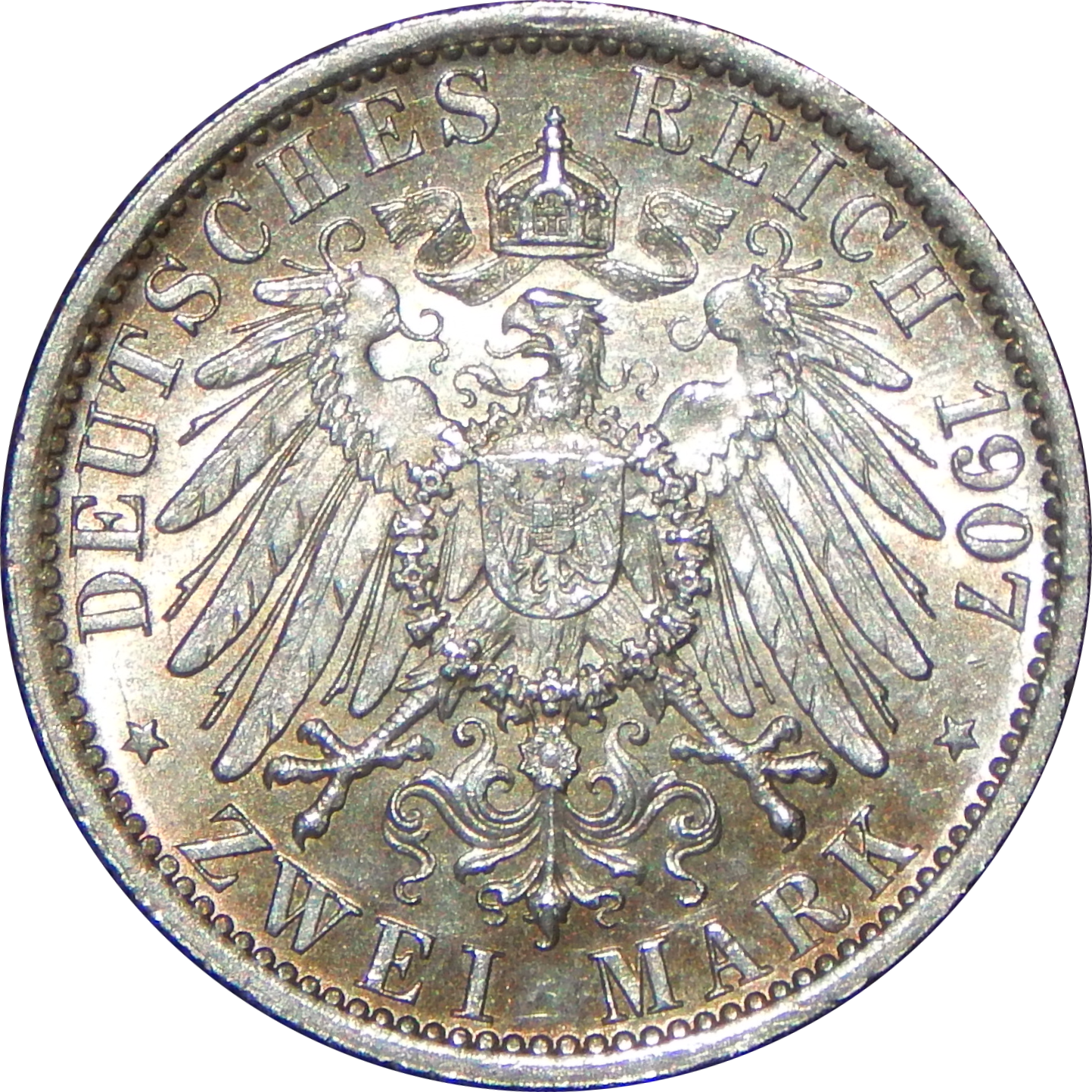Imperial German 2 Mark Coin
From the Collection: A silver coin bearing the image of Kaiser Wilhelm II
When the German Empire was formed in 1870 from the North German Confederation (a Prussian led alliance against Imperial France), the constituent states of the new country used a variety of different currencies for day to day transactions. The dominant currencies, the northern Thaler and the southern Gulden, were used as the basis for the new Imperial currency: the Mark. With the influx of French Gold Francs taken as reparations after the end of the Franco-Prussian War, the Mark was launched with a solid backing on the gold standard, and officially replaced all the older German currencies by 1876.
By 1914 the Mark had a listed value of .01 ounce of gold, giving it a value approximate to .25 US cents at the time (the US also being on the gold standard). Various gold and silver coins were issued, in addition to smaller denomination coins made from copper. The two Mark coin seen here was minted in 1907, and thus bears the image of Kaiser Wilhelm II on the obverse, along with the legend:
WILHELM II DEUTSCHER KAISER KONIG V. PREUSSEN
translating to:
WILHELM II, GERMAN EMPEROR KING OF PRUSSIA
The reverse of the coin features the German Imperial Eagle (Reichsader) and the legend:
DEUTSCHES REICH 1907
ZWEI MARK
Translating to:
GERMAN REALM 1907
TWO MARK
Kaiser Wilhelm II
When the First World War broke out in August of 1914 the German Empire discontinued the use of the gold standard, as did many of the belligerent powers. This move had been seen coming by some citizens, however, which led to hoarding of gold and silver coinage in the summer of 1914. When the war began, the situation got worse quickly, with retailers even going to far as to stop issuing coin change during transactions in order to keep the precious metals, with the efforts of the Reichsbank (German reserve bank) to contain it proving less than successful.
The suspension of the gold standard was only intended to last until the end of the end of the war, but the collapse of the German Empire in 1918 led to the end of the gold standard, with the new Weimar Republic maintaining the use of paper fiat currency, with silver coinage (but not gold) eventually returning for a brief period in the late 1930s, albeit with a significantly lower silver content.


